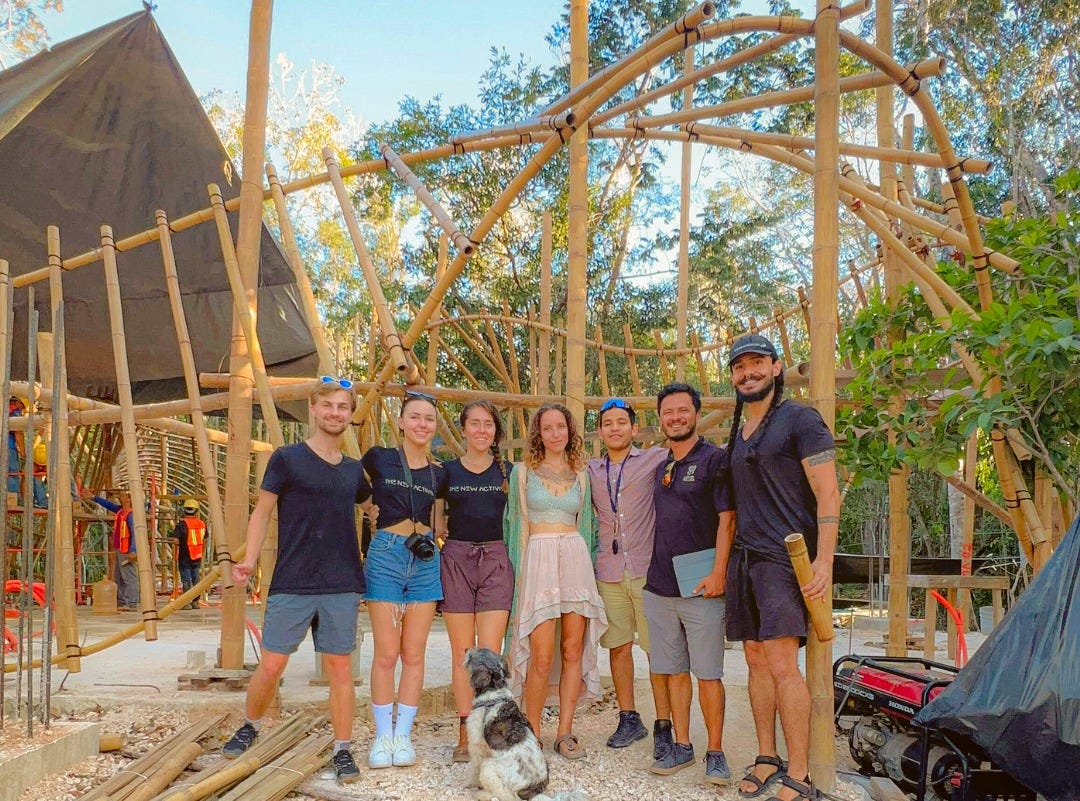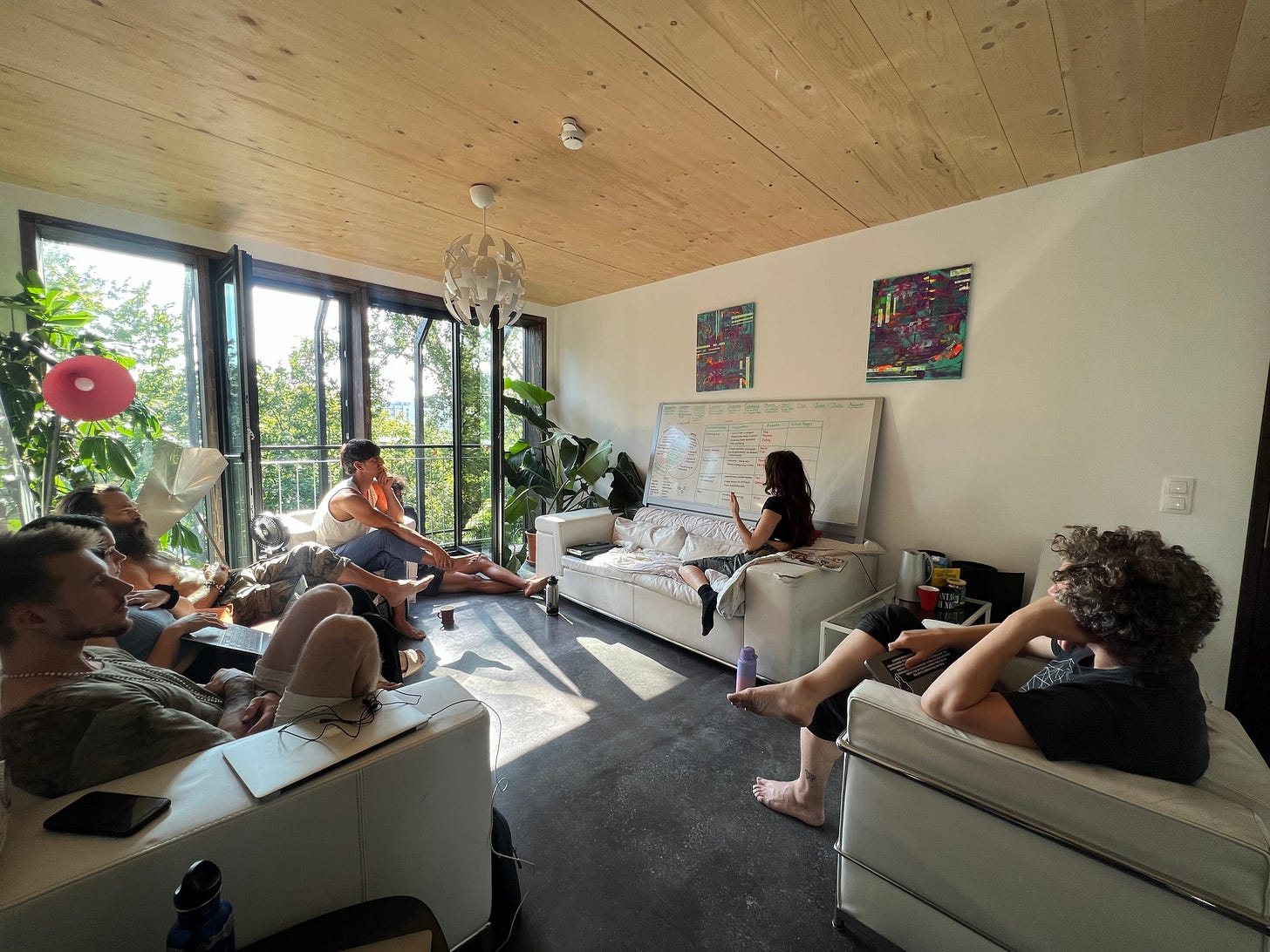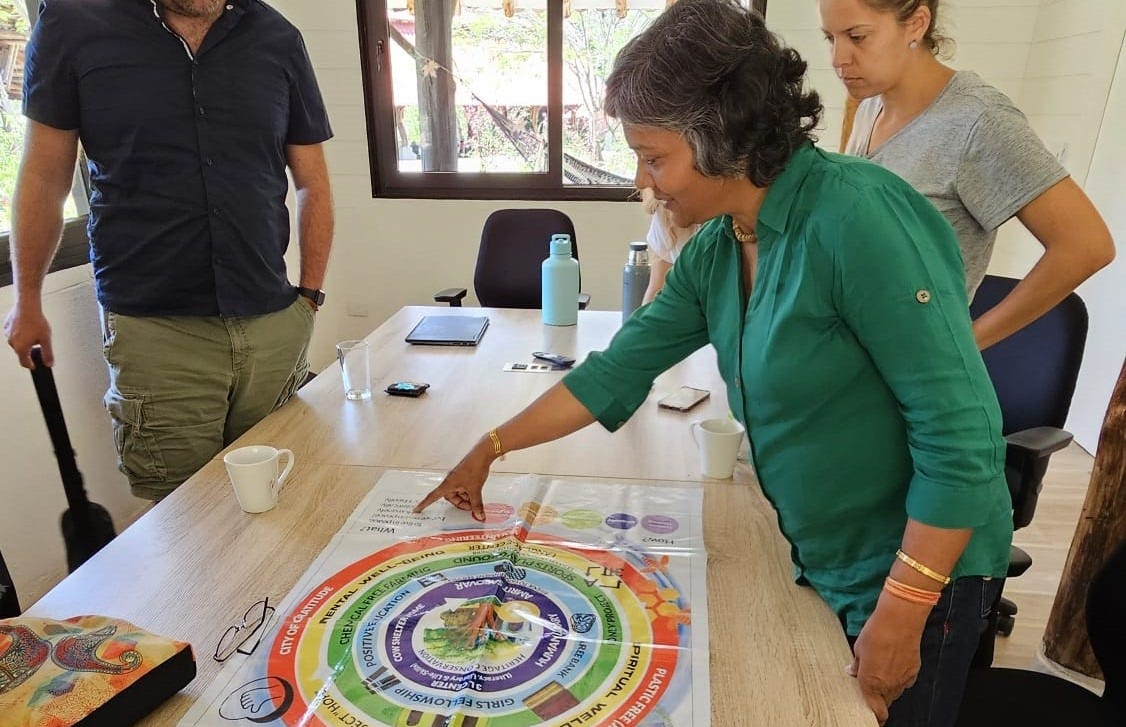So you’re a visionary, and you want to build a village.
To get there, you need the right co-founders.
Not just warm bodies who like the idea, but true partners who will be in the trenches with you, building this dream from the ground up.
Without co-founders, you will not be successful building something truly regenerative. At best, you get a real estate project, at worst a personality cult where you are the de facto town mayor.
So here’s what I’ve found helps attract the most aligned village co-founders.
1. Get Loud About Your Vision
If you’re quietly waiting for the perfect co-founder to magically appear, you’re going to be waiting a long time.
You need to put your vision out into the world—boldly, clearly, and repeatedly.
Share your project online: LinkedIn, Substack, Instagram, podcasts, Reddit, and community forums and group chats. Wherever people who care about this stuff are gathering, you should be there.
Start conversations: Go to events, webinars, and regenerative real estate meetups. Join discussions in GEN, cohousing groups, permaculture networks, and startup city circles.
Tell your story. Why are you doing this? What problem are you solving? Who is this for? Get people emotionally invested.
The more you talk about it, the more you attract aligned people who resonate with your vision.
Tip: Make an Actual Call for Co-Founders
, because I’ve been buried under the mountain of other projects. Now, I’m ready to start sharing about it more.
I’ve been lightly vocal about my breakout project,My experience has been that just mentioning your project is not enough. You need to actively voice your need for co-founders, and this should be part of your early sharing strategy.
2. Define the Roles You Actually Need
Too many people just look for “co-founders” without defining what they actually need help with.
What skills will truly move the needle in making your project real?
Visionary + Integrator → Are you a big-picture dreamer? Then you are a visionary and you need to find someone who thrives in execution (Integrator)
Finance & Legal → Who can help with fundraising, investment structuring, and land acquisition?
Operations & Logistics → Who knows how to turn ideas into real-world systems?
Design & Development → Who understands architecture, land planning, and regenerative infrastructure?
Marketing & Community Building → Who can help build an audience, rally support, and attract residents? Who is the best “personality” public figure to represent your project?
You don’t need clones of yourself. You need people who complement your weaknesses. A regenerative village is living system that thrives on diverse skills and shared leadership.
Tip: Aim for A Team of 4-7
I’ve made the mistake of working in small teams of 3 or 2, and it just doesn’t carry the same momentum. Conversely, any bigger than 7 gets unwieldy. Especially at the beginning, when your village co-founders will most likely be working on the project part-time.
So, outline an org chart and look for people who can thrive in these roles.
3. Build with the Builders
The best way to find committed co-founders? Look for people who are already building something. Treat people working on something similar to your dream not as your competition, but as potential partners.
Is someone already running a small eco-community, permaculture farm, or coliving space?
Do they already have experience with regenerative real estate, ecovillage startups, or alternative development models?
Have they proven that they can execute projects, work collaboratively, and adapt?
People who are already building are way more likely to follow through than those who just like the idea in theory. There are plenty of people who dream about building about villages, but fewer that possess the skills to implement the project.
Tip: Onboard Co-Founders One at Time
When you get a group of people together to figure out what the shared vision is, you often waste time trying to build alignment where there isn’t any.
Instead, spend time refining your vision and building out documents that explain the project. Then run through your vision with one potential co-founder to check for alignment.
4. Create a Trial Run (Before You Commit)
A bad co-founder relationship can destroy a project before it even gets off the ground. Or make the project chug along without much energy or progress.
So before you lock anyone in, test the waters.
Work on a mini project together—it could be a research report, a land scouting trip, or a crowdfunding campaign.
Live and work together for a short period—maybe a coliving trial, a site visit, or an on-the-ground build week.
Have the hard conversations early—equity, decision-making, finances, and responsibilities.
See how they show up. Do they follow through? Do they thrive in chaos or shut down? Do you actually like working with them?
If it works, go all in. If not, move on quickly.
Tip: Liberate People By Limiting Them
In my case, our team had a particularly liberating call recently when we finally defined me as the project leader, and Victor as a mentor rather than a co-founder. Just because the people involved are excited or willing to roll in the co-founder mud with you, doesn’t mean they this is the role they will thrive in the most.
5. Make It Easy for People to Say YES
Some of the best potential co-founders might be on the fence—not because they don’t love the idea, but because they don’t know how to step in.
So make it clear: what’s in it for them?
Is there an equity stake?
Are you pooling land or funding together?
Will they have a defined role and responsibility?
How does this opportunity fit into their long-term goals?
If your offer is too vague, people won’t take action. But if you make it tangible—“Join me in launching this village, and you’ll have X% equity, a leadership role in X, and a long-term home in the community”—you’ll get serious interest.
Tip: Design An Offer for Co-Founders AND Advisors
I want to be able interest high-performing people with my project. So I’ve developed a team agreement document for co-founders and advisors to describe “what’s in it for them”. As mentor,
is currently advising on our contribution tracking system on our DAO.

The Best Time to Start? Yesterday. The Next Best Time? Right Now.
The longer you wait to find the right co-founders, the longer your village stays a dream instead of a reality.
So get out there. Start talking about your vision. Connect with doers, not just other dreamers. Put people to the test.
And build with those who are ready to build.
Your future village depends on it.
Connect with Nicole
Are you new here? Subscribe to this newsletter for free
Follow me on LinkedIn for more insights
Make an inquiry for 1:1 community marketing consulting











Reading this, it strikes me this is excellent wisdom for co-creation of many projects, particularly community ones where the stakes are high ... like community climate adaptation. As I read, I could see how others who might be the end beneficiaries of the project, could look on at the project's progress with confidence because of the excellent principles of the project's establishment.
Well thought-out and written, Nicole! Very timely as many of us are ready to start grounding our visions into reality.